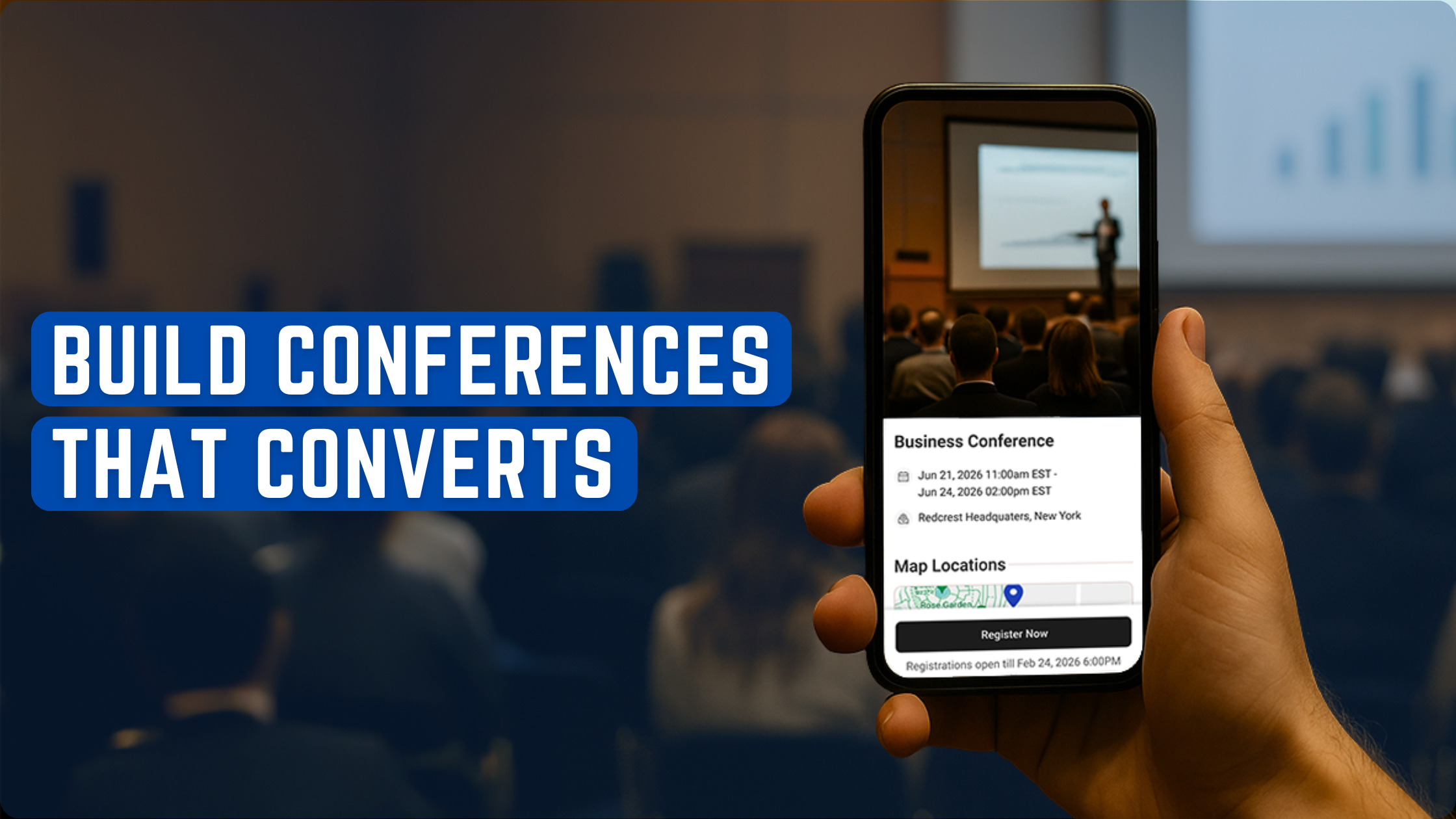If you've ever attended a conference, you know how valuable the experience can be. Between the keynote speakers, breakout sessions, and networking opportunities, you can learn a lot and make valuable connections. But what do you do with all the data you collect? Analyzing user behavior data from a conference can help you understand what worked and what didn't, and make better decisions for future events.
To get started, you'll need to collect data about your attendees. This can include registration information, session attendance, and feedback surveys. You can also use tools like heat maps and session tracking to see which sessions were the most popular and which ones attendees left early. Once you have this data, you can start analyzing it to find patterns and insights.
One way to analyze user behavior data is to look for trends in attendance and engagement. For example, you might notice that attendees were more engaged during sessions that were held in the morning, or that sessions with a particular topic or speaker were more popular. You can also look for patterns in feedback data to see what attendees liked and didn't like about the conference. By analyzing this data, you can make informed decisions about how to improve your next event and create a better experience for your attendees.
Understanding User Behavior Data
When it comes to analyzing user behavior data from a conference, having a clear understanding of the data collection methods and key metrics is crucial for making informed decisions. In this section, we will discuss the different data collection methods and key metrics and indicators that you should consider when analyzing user behavior data.
Data Collection Methods
There are several data collection methods that you can use to gather user behavior data. Some of the most common methods include:
- Surveys: Surveys are a great way to collect user feedback and opinions. You can ask questions about their experience at the conference, what they liked and disliked, and what they would like to see in the future.
- Interviews: Interviews are more in-depth than surveys and can provide valuable insights into user behavior. You can conduct one-on-one interviews with attendees to discuss their experience and gather feedback.
- Social Media Monitoring: Social media monitoring is a great way to track user behavior and sentiment. You can monitor hashtags related to the conference and track what attendees are saying about the event.
- Website Analytics: Website analytics can provide valuable insights into user behavior on your conference website. You can track metrics such as page views, bounce rates, and conversion rates to see how attendees are interacting with your website.
Key Metrics and Indicators
Once you have collected user behavior data, it's important to identify the key metrics and indicators that will help you make informed decisions. Some of the key metrics and indicators that you should consider include:
- Attendance: Attendance is an important metric to track as it gives you an idea of how many people attended the conference. You can use this information to plan for future events and make adjustments to your marketing strategy.
- Engagement: Engagement is a key indicator of how attendees are interacting with your conference. You can track engagement metrics such as session attendance, social media interactions, and survey responses to see how engaged attendees were.
- ROI: Return on investment (ROI) is an important metric to track as it helps you determine the success of your conference. You can track metrics such as ticket sales, sponsorships, and revenue to see if the conference was profitable.
By understanding the different data collection methods and key metrics and indicators, you can make informed decisions about your conference and improve the attendee experience.
Analyzing and Interpreting Data
Once you have collected user behavior data from your conference, the next step is to analyze and interpret it. This will help you gain insights into attendee behavior and preferences, which you can use to optimize strategies for future events. Here are some key techniques for analyzing and interpreting data:
Qualitative vs Quantitative Analysis
There are two main types of data analysis: qualitative and quantitative. Qualitative analysis involves examining non-numerical data, such as feedback forms or comments, to identify patterns and themes. Quantitative analysis, on the other hand, involves examining numerical data, such as attendance rates or session feedback ratings, to identify trends and correlations. Both types of analysis are important for gaining a comprehensive understanding of attendee behavior.
User Segmentation
User segmentation involves dividing attendees into groups based on shared characteristics, such as demographics or interests. This can help you identify patterns and trends within specific groups, and tailor your marketing and event strategies accordingly. For example, if you find that a particular demographic group is more likely to attend certain sessions or engage with certain activities, you can focus your efforts on targeting that group in future events.
Trend Identification
Trend identification involves identifying patterns and trends within your data, such as attendance rates or feedback ratings, over time. This can help you identify areas of improvement or success, and adjust your strategies accordingly. For example, if you find that attendance rates for certain sessions have been declining over time, you can adjust the scheduling or content of those sessions to better meet attendee needs.
Predictive Analytics
Predictive analytics involves using data to make predictions about future attendee behavior or trends. This can help you anticipate attendee needs and preferences, and adjust your strategies accordingly. For example, if you find that attendees who engage with certain activities are more likely to return to future events, you can focus your efforts on promoting those activities to increase attendee retention.
Related Posts:
- Create Memorable Events with Ticket Templates
- Generating Event Insights Made Easy
- Streamlined Ticket Validation with the Ticket Generator
- Send Custom Tickets Seamlessly with the Ticket Generator
As you analyze and interpret your user behavior data, it is important to have the right tools at your disposal. Ticket Generator offers a range of customizable ticket templates to enhance your event experience, as well as event insights and attendance tracking tools to help you gain valuable data and trends. Additionally, Ticket Generator provides QR codes for ticket validation, ticket sharing options via social media platform, and 10 free tickets after signup. These features can help you streamline attendee management and enhance event security.
Conclusion
In conclusion, analyzing user behavior data from a conference can provide valuable insights into attendee engagement, preferences, and areas of improvement. By collecting and analyzing data such as session attendance, session feedback, and networking interactions, you can gain a better understanding of what worked well and what can be improved upon for future conferences.
One effective way to analyze user behavior data is to use data visualization techniques such as charts and graphs to identify trends and patterns in the data. This can help you make data-driven decisions and prioritize areas for improvement.
Another important aspect of analyzing user behavior data is to set clear goals and metrics before the conference. This can help you measure the success of the conference and identify areas for improvement. For example, if your goal is to increase attendee engagement, you can measure engagement metrics such as session attendance, session feedback, and networking interactions.
Overall, analyzing user behavior data from a conference can provide valuable insights into attendee engagement and preferences. By using data visualization techniques and setting clear goals and metrics, you can make data-driven decisions and improve the overall experience for attendees.






.gif)





